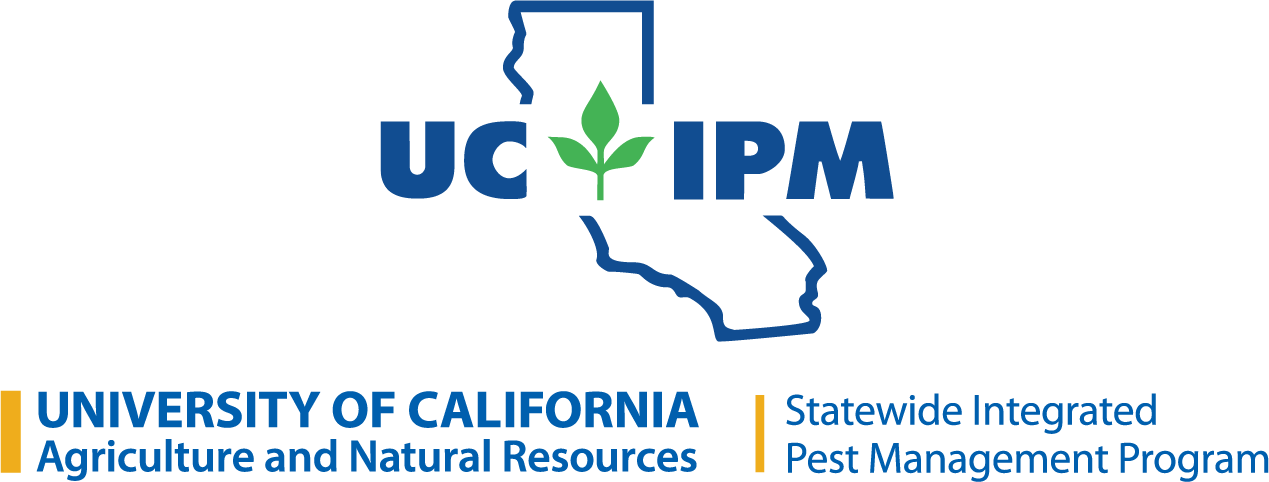Large crabgrass is a widely distributed summer annual grass that germinates throughout the summer. However, new seedlings may begin to appear as early as February. In California large crabgrass is found in the North Coast, southern Cascade Range foothills, Sierra Nevada foothills, Central Valley, central-western region, South Coast, and probably North Coast Ranges up to 3900 feet (1200 m) in elevation. It inhabits agricultural land and other disturbed sites. Once established, it is difficult to remove because it roots from portions of lower stems. It can provide good forage for livestock.
Habitat
Crop fields, orchards, vineyards, gardens, landscaped areas, turf, nurseries, pastures, roadsides, ditches, and other disturbed places.
Seedling
Seedlings sprout quickly. They are pale green and covered with coarse hairs. They form clumps with extensive but shallow roots where the soil is moist. Young leaves are rolled in the bud and unroll as they grow out of the center. Large crabgrass seedlings resemble those of witchgrass but are covered with shorter hairs.
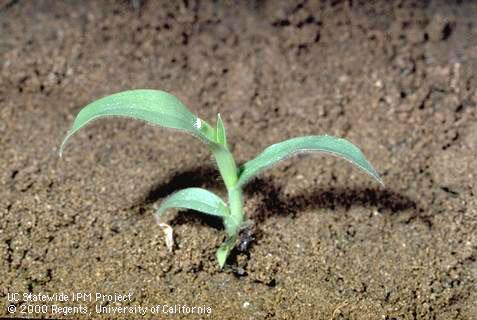
Mature Plant
Plants grow in clumps to about 2-1/2 feet (80 cm) tall, mostly upright, but sometimes prostrate. Stems are flat in cross-section, often purplish, and usually branched at the base. Leaves are flat, rolled in the bud and have a prominent midvein. It can be distinguished from smooth crabgrass, D. ischaemum, by its longer, narrower leaf, and presence of long stiff hairs on the sheath and on the upper and lower leaf surfaces. Leaves are about 1-1/4 to 8 inches (3–20 cm) long. In California smooth crabgrass is most often found in turfgrass whereas large crabgrass is more often found in gardens and landscaped areas.
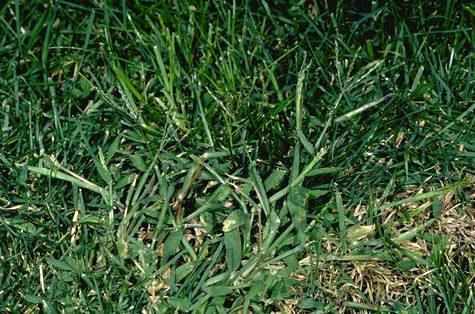
Collar Region
There is a membranous ligule but no auricles.
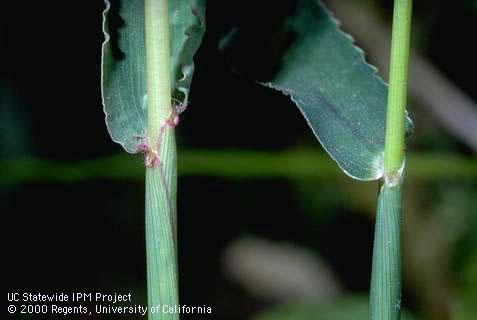
Flowers
Flowering takes place from June through October. Flowers cluster along 3 to 7 slender, fingerlike branches that are located toward the end of the flowering stem. Although similar in appearance to the flower head of bermudagrass, Cynodon dactylon, the spikelike flower branches of large crabgrass arise separately from the stem; those of bermudagrass radiate from the same point. Spikelets are lance to egg shaped, and mostly less than 1/10 of an inch (about 3 mm) long.
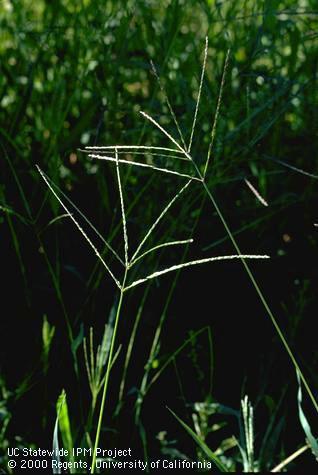
Reproduction
Reproduces by seed.

